Gtx 1080 Ti With Freesync Monitor
2021 Update: Since Nvidia opened up to support FreeSync monitors with GeForce GPUs, the gaming monitor market completely shifted gears and today most gaming monitors are fully capable of VRR (variable refresh rates) on GeForce and Radeon graphics cards without a problem. Hither are some more recent manufactures and tests we've performed:
- FreeSync and G-Sync: What Y'all Demand to Know
- All-time Gaming Monitors 2021: 1440p, 4K, Budget and Ultrawide
- FreeSync on Nvidia GPUs Revisited
To the surprise of many, Nvidia has backed downward from their G-Sync tower and enabled Nvidia GPU owners to utilise adaptive sync with a wide range of FreeSync monitors. The feature was announced during CEO Jensen Huang CES 2019 keynote and this week information technology'southward been enabled by the latest GeForce drivers.
Now you might be thinking, "wide range, that's not correct, Nvidia only announced that 12 monitors would exist supported!". But that's not actually the case. Nvidia's proclamation of this feature was a fiddling misleading, and so nosotros'll clarify information technology here. Nvidia's back up for adaptive sync displays now comes in the form of iv tiers. Yes, 4...
At the height is G-Sync Ultimate, the new proper name for G-Sync HDR. Monitors that are One thousand-Sync Ultimate certified accept Nvidia'south G-Sync HDR module inside, and support the total suite of HDR features. G-Sync Ultimate monitors include the Acer Predator X27, the Asus ROG Swift PG27UQ and the new HP Omen X Emperium 65.
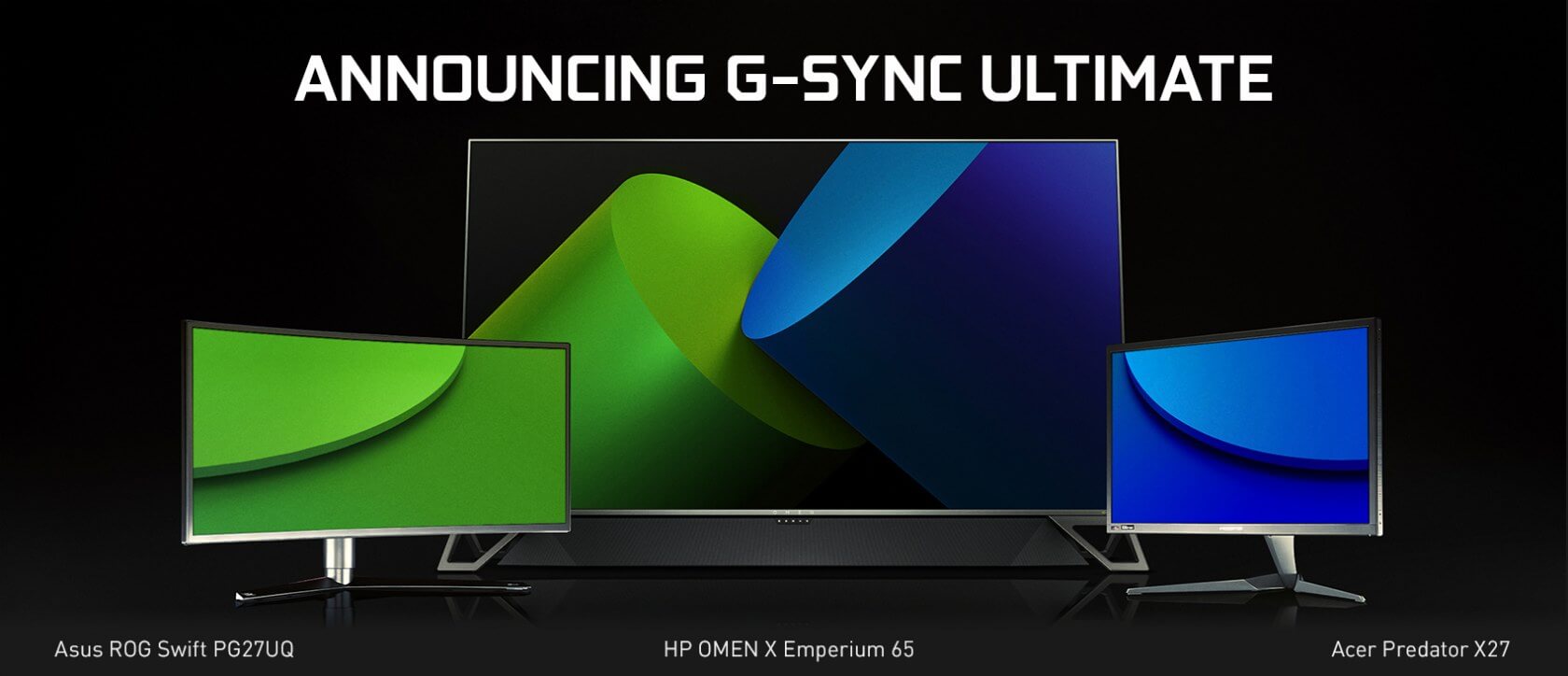
One footstep downwards is regular G-Sync.
These are the monitors we've had for many years now, that include a G-Sync module but don't support Grand-Sync HDR. These are the adaptive sync monitors that have always worked with Nvidia GPUs and Nvidia GPUs just, and the ones that command a college price tag than their FreeSync counterparts.
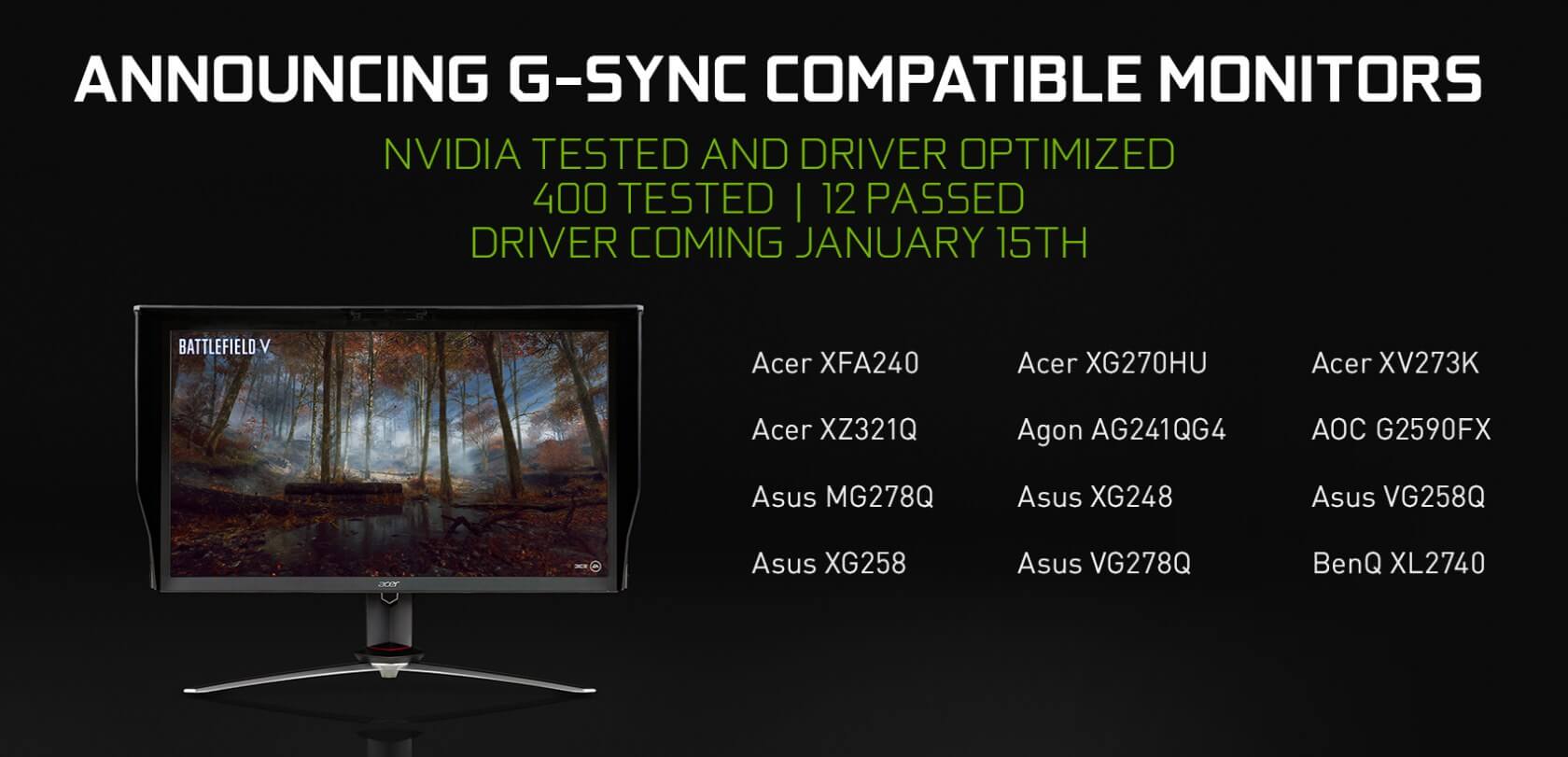
So nosotros go down to "Grand-Sync compatible" monitors.
These are FreeSync monitors that Nvidia has certified to pass their strict M-Sync performance metrics. They don't take a Yard-Sync module, but they do back up the VESA Adaptive Sync standard, then they also work with AMD GPUs. With the latest Nvidia drivers, these monitors now work with adaptive sync on Nvidia GPUs by default.
So far, Nvidia has announced that 12 monitors are Chiliad-Sync Compatible, you can run across the list in a higher place. If you lot own any of these monitors and install Nvidia's latest driver, adaptive sync volition be enabled automatically and you can use it merely like y'all would with whatever Thou-Sync monitor.
Nvidia claims that G-Sync compatible is still inferior to regular old Yard-Sync, they have this table here showing that Thousand-Sync monitors are certified with more image quality tests, take a total variable refresh rate range, variable overdrive and are mill color calibrated. However, there is no reason why a G-Sync Compatible monitor couldn't likewise be factory calibrated or have a total variable refresh rate range, Nvidia merely isn't requiring these things for the monitor to receive a G-Sync uniform sticker, while One thousand-Sync monitors must have those features.
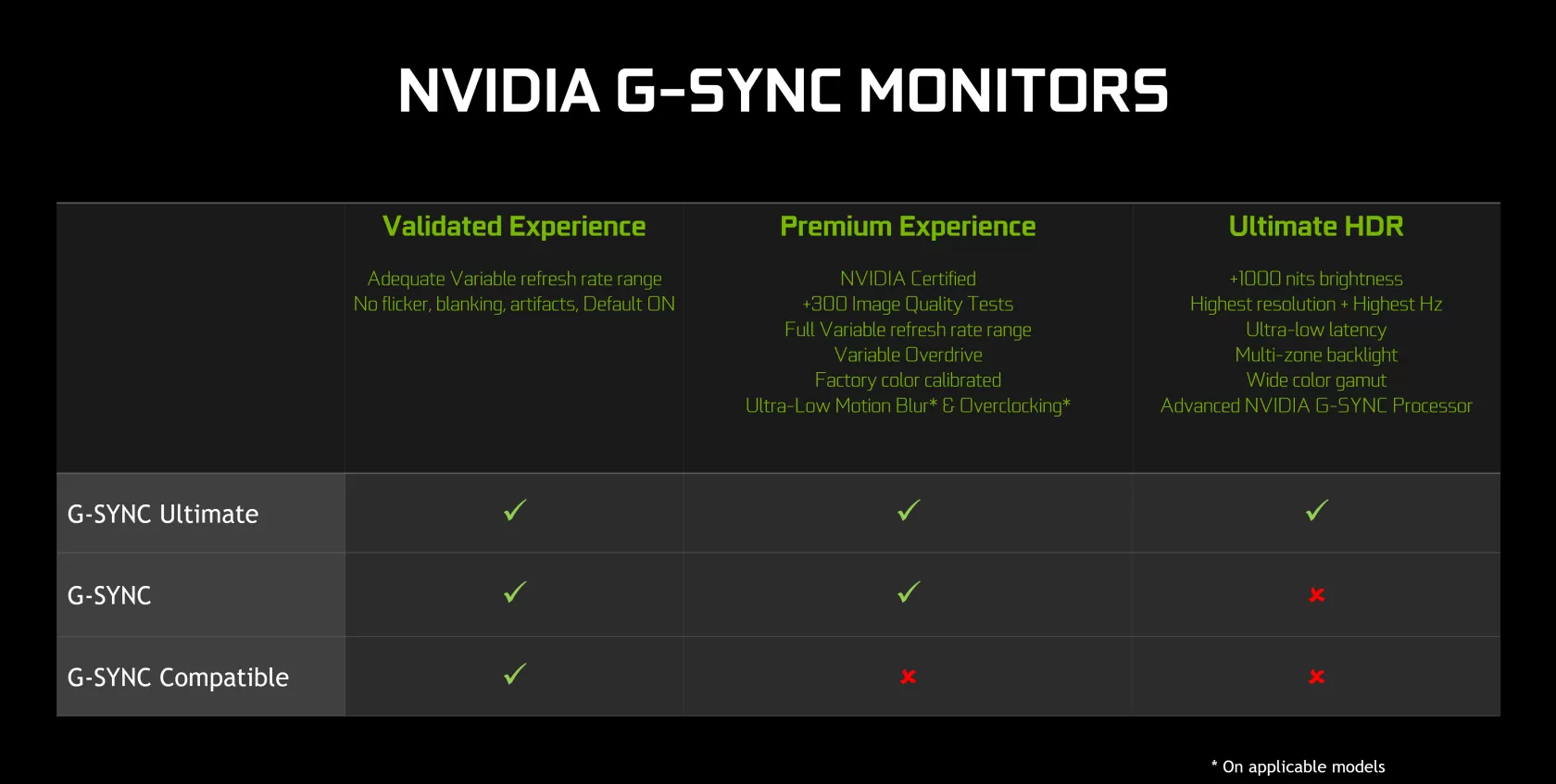
There's also a fourth tier that Nvidia merely talks about briefly. And that's the ability to use any FreeSync or VESA Adaptive Sync monitor with an Nvidia GPU via a toggle in the Nvidia Control Panel.
Nvidia claims that this is for "VRR monitors yet to be validated as Thousand-Sync uniform" and says that when enabling the feature "it may piece of work, information technology may work partly, or it may non piece of work at all". Of course, only certified monitors are guaranteed to piece of work, and by Nvidia's numbers -- 12 supported monitors out of 400 tested -- your prospects may expect bleak, however the drivers practise not restrict you and in reality every adaptive sync monitor is now supported. All you have to exercise is enable the toggle, and away you go.
Now, Nvidia spent a bit of time during their keynote and on the showfloor attempting to convince people that the G-Sync compatible program is necessary, because apparently non-certified monitors are rife with issues. They showed off monitors that were flickering and blanking, and basically used those examples to tarnish the entire FreeSync ecosystem. Nvidia claims the Thousand-Sync compatible monitors they've certified practise not have these issues, while any non-certified monitors likely will.
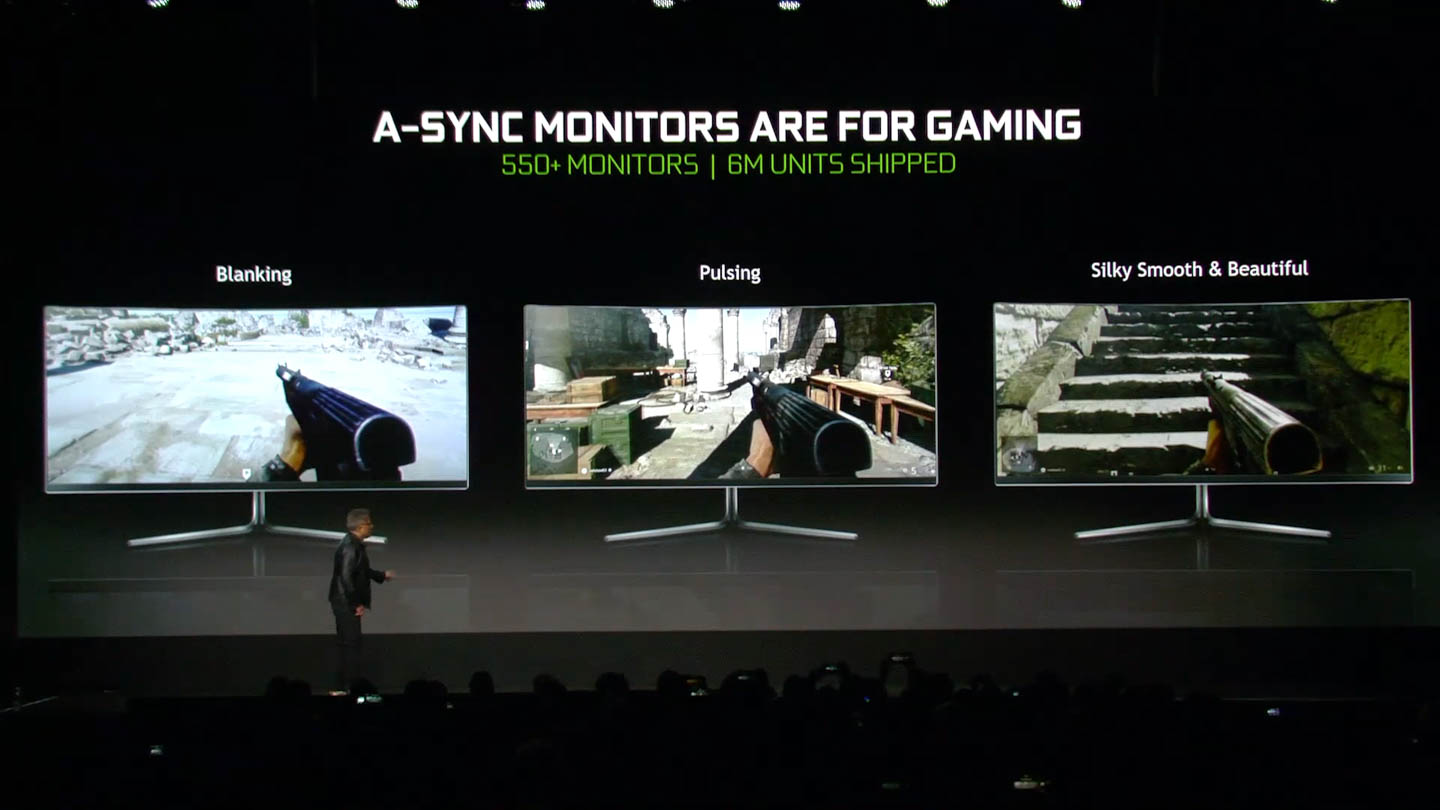
As soon as we saw this, we called BS. And that'due south because the issues they showed off are non problems with FreeSync or the VESA Adaptive Sync standard; they are not issues inherent to the technology. Instead, they are issues with monitor manufacturers producing a crappy product. It's no surreptitious that some FreeSync monitors - particularly earlier models - aren't very skilful and do indeed have issues similar flickering even on AMD GPUs.
But those monitors are just rubbish. In our opinion, if you receive a monitor that flickers or has blanking issues, information technology's a lacking product that should be returned. Of class, at that place is a possibility that adaptive sync monitors that work perfectly on AMD GPUs, will have issues on Nvidia GPUs. That would be Nvidia's fault for non implementing back up for adaptive sync properly, but every bit with all implementations, bugs and other issues are possible.
Enabling G-Sync on your FreeSync monitor

First, a quick look at how exactly you enable adaptive sync support for non-certified monitors. Open up the Nvidia Command Panel, browse to "set up G-Sync", and so select your FreeSync monitor. From here, make certain both the "enable Grand-Sync, 1000-Sync compatible" checkbox and the "enable settings for the selected brandish model" checkbox are ticked. The second checkbox doesn't appear if the monitor is G-Sync certified. And then click Employ, your monitor will restart and adaptive sync will be enabled.
In some cases you might need to go into the global 3D settings and select G-Sync Compatible from the "monitor technology" drib-down menu, just across the monitors we've tested this wasn't necessary. It's too of import to note that FreeSync has to be enabled on the monitor itself (commonly using the on-screen menu). Some monitors have a toggle that allows you to turn FreeSync or adaptive sync on or off, you'll need to set it to 'on' to get the choice to enable adaptive sync.
One final note, Chiliad-Sync compatible and FreeSync monitors only piece of work with Nvidia's GTX 10 serial or newer. We tested a variety of monitors with a GeForce RTX 2080 Ti, just all Pascal cards should too piece of work. This is unlike to One thousand-Sync monitors, which work with GPUs back to Nvidia's GeForce 600 series. We believe this is considering Pascal is the first GPU compages to support adaptive sync too as Thou-Sync, while older architectures supported just G-Sync.
Testing FreeSync on a GeForce
So far we've tested 7 FreeSync monitors with an Nvidia GPU. All of these monitors we've previously tested and found to work flawlessly with AMD GPUs. Then no flickering, blanking or other bug. They work fine. We'd take loved to exam more monitors because at that place are over 500 models, but these are all the monitors we accept on mitt. Yet, should be a fairly good sample size correct at present.
The goal for testing was to see if there were whatever differences between adaptive sync enabled and disabled with an Nvidia GPU, and if at that place were any differences compared to the monitor fastened to an AMD GPU with FreeSync activated. This included testing the monitor across a range of frame rates to see how it behaved inside and exterior the refresh rate range.

The first monitor we tested was the Acer KG251QF, a budget 24-inch 1080p monitor with a xxx to 144 Hz refresh rate range. This is a corking monitor for the cost and information technology's safety to say nosotros found no bug with the monitor working with adaptive sync enabled on an Nvidia GPU. No flickering, no blanking, aught. It worked exactly the same as when hooked up to an AMD GPU. And then that's a success.
The 2d monitor was the BenQ EL2870U, a 4K 60Hz console with a narrow twoscore to 60 Hz refresh charge per unit range. This monitor also worked perfectly, although the refresh range is too narrow to support low framerate compensation, or LFC. So when frame rates dropped below forty FPS, adaptive sync no longer functioned and either tearing or stuttering was introduced depending on whether you had Vsync disabled or enabled. This is expected behaviour and also happens with an AMD GPU. Once again, nosotros'd class this every bit a success.
The next monitor was the Viotek GN24C, another 24-inch 1080p monitor, this time with a VA panel and a 48 to 144 Hz refresh rate range. Again, this monitor worked perfectly, and due to the large refresh charge per unit range it likewise supported LFC.
This was 1 characteristic we were curious to see if worked properly on GeForce GPUs. If Nvidia was being lazy they would only let adaptive sync deactivate when frame rates dropped below the 48 Hz refresh window. However that'southward not the case, instead Nvidia is properly supporting LFC with monitors that should back up LFC, so when frame rates drop beneath 48 FPS, the monitor runs at a multiple of the frame rate and frames are duplicated.
For example, if the game was running at 37 FPS, the monitor would refresh at 74 Hz and show each frame twice. So information technology'due south nice to see one of the fundamental features of adaptive sync, that Nvidia already uses for G-Sync monitors, besides works here without any corners cut.
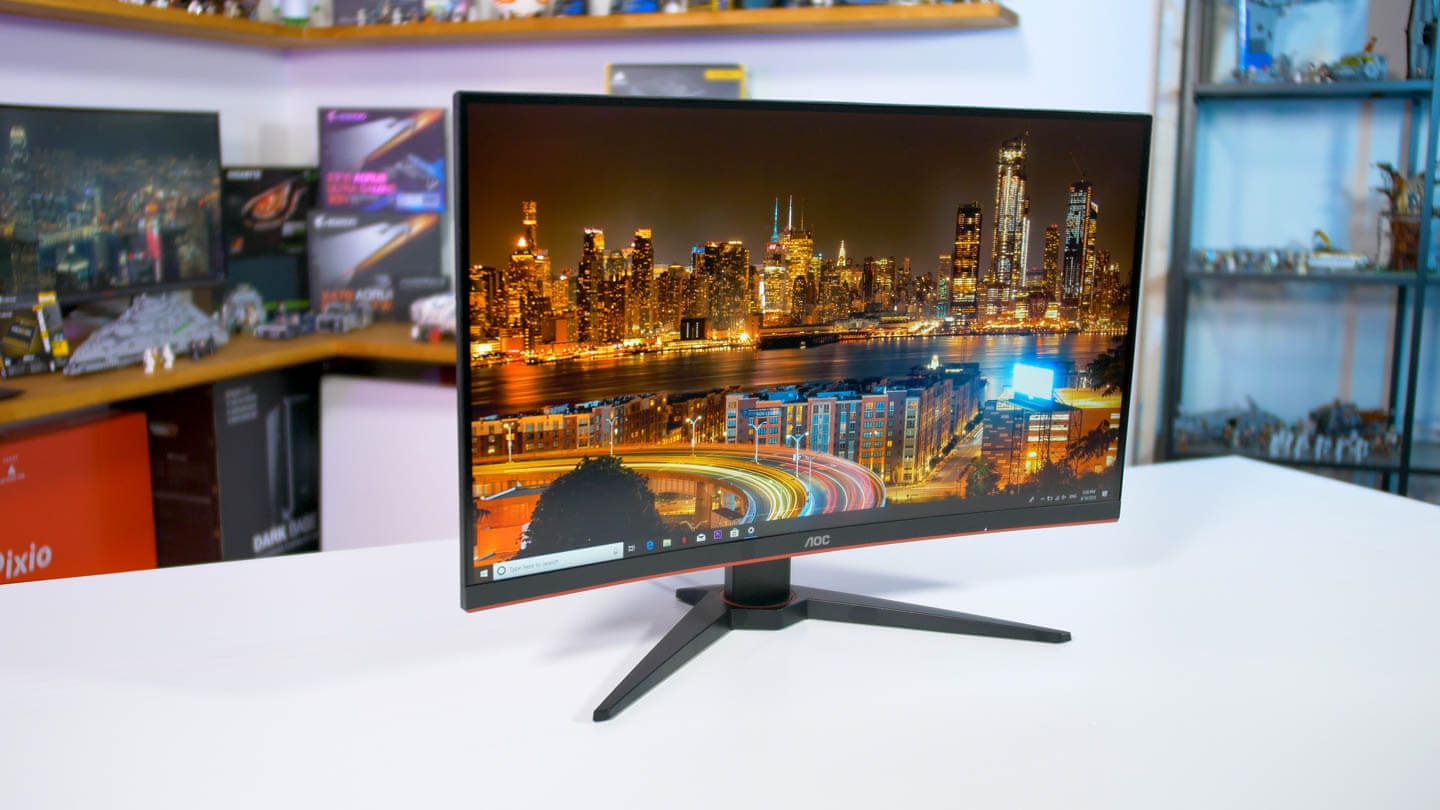
We tested two other monitors with similar results, the AOC C27G1, a 27-inch 1080p monitor with a 48 to 144 Hz refresh range, and the Viotek GN32LD, a 32-inch 1440p monitor with a 48 to 144 Hz refresh range. Both monitors worked perfectly and had functional LFC.
Then we have the Philips Momentum 43, a 43-inch 4K monitor with a 48 to 60 Hz refresh range and HDR back up. There'due south no LFC hither due to the narrow refresh window, only otherwise this panel worked as expected with no issues.
The good news is that you get adaptive sync support even when HDR is enabled; information technology's not a matter of choosing one or the other, HDR has no impact on adaptive sync capabilities, which is expert news for those interested in an HDR monitor only didn't want to buy a G-Sync Ultimate display.
There is ane FreeSync monitor nosotros tested that didn't piece of work with adaptive sync on an Nvidia GPU, but this isn't a huge surprise. The Viotek NB24C just supports adaptive sync through HDMI, while Nvidia GPUs only support adaptive sync through DisplayPort. AMD GPUs can do adaptive sync through either HDMI or DisplayPort, so this monitor has functional adaptive sync with AMD GPUs but non Nvidia GPUs.
The lack of adaptive sync over HDMI volition likewise disappoint those looking to pair an Nvidia GPU with the range of FreeSync-capable TVs that have been hitting the market in recent years. Virtually FreeSync TVs merely have HDMI ports, so once again, Nvidia GPU owners will be left out for at present.
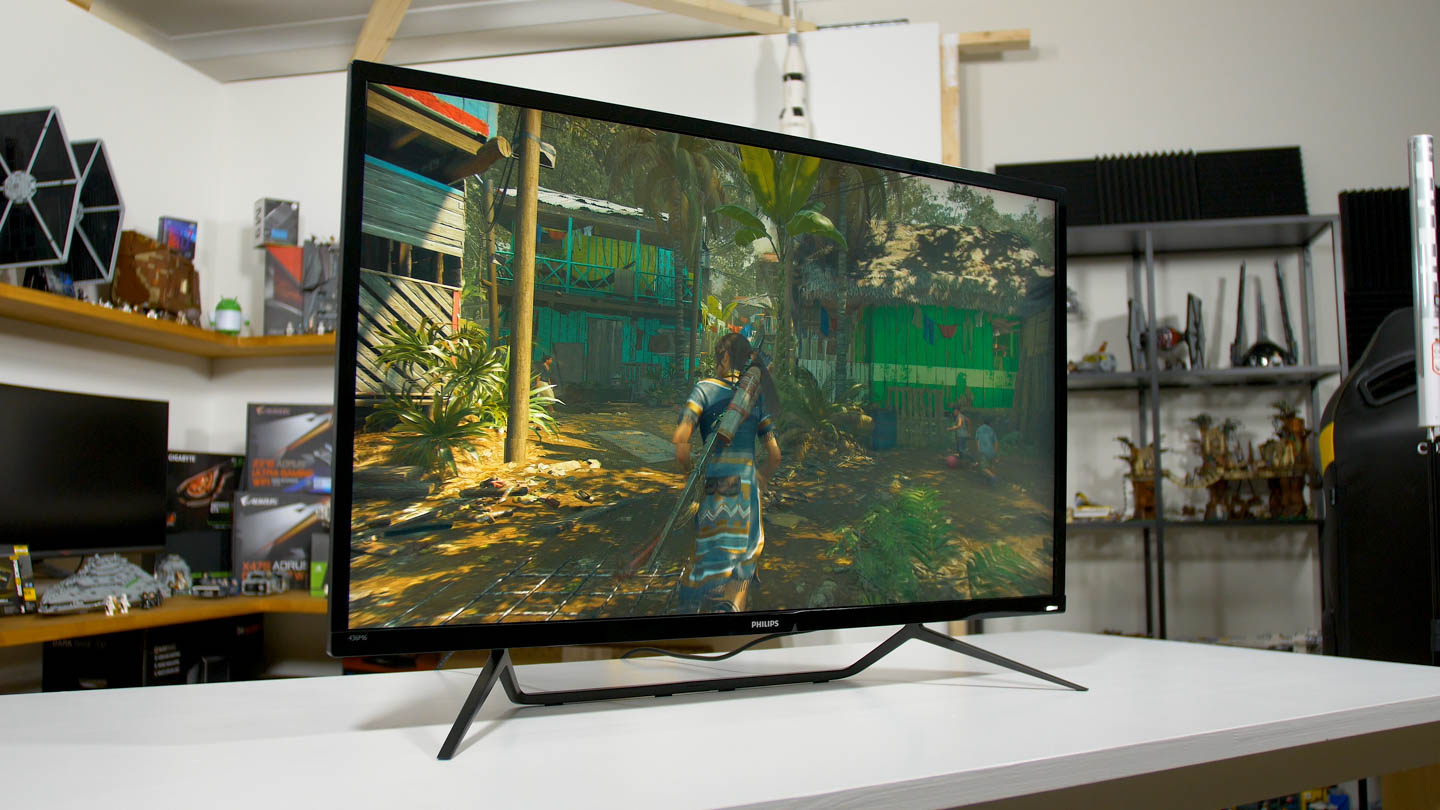
So of the seven monitors we tested, six worked flawlessly. The one monitor that didn't was never going to because it required FreeSync over HDMI, which Nvidia doesn't support. It'due south besides skillful to verify that low framerate compensation and HDR work in conjunction with adaptive sync on Nvidia GPUs, merely like they do on AMD GPUs.
We expect what we establish hither volition be the case for the vast majority of FreeSync monitors. If the monitor is known to work perfectly with AMD GPUs over DisplayPort - and so it doesn't have inherent flickering problems - information technology should also work perfectly with Nvidia GPUs when you enable the toggle. If the monitor has bug on an Nvidia GPU, it volition besides likely have issues on an AMD GPU, and should exist returned.
Should the monitors we tested to piece of work perfectly be certified every bit Yard-Sync compatible? It's hard to say without knowing Nvidia's strict testing guidelines. Yet any monitor that doesn't support LFC will automatically fail - and in that location are loads of FreeSync monitors without LFC including two I tested today. But I think it's of import to stress that you don't demand to purchase a G-Sync compatible monitor to go adaptive sync with your Nvidia GPU. Buying a K-Sync compatible monitor volition guarantee a working feel and guarantee support for features like LFC, only regular FreeSync monitors will work just fine as well.
As for a few loose ends... we don't have whatever of the G-Sync compatible monitors to test with and compare, nevertheless having tested many G-Sync monitors before, we had the same kind of excellent experience with non-certified FreeSync monitors. The G-Sync compatible badge only ensures a sure level of quality that you may not get with, say, the cheapest and crappiest FreeSync displays.
If you're wondering nigh input lag, we measured no observable difference to input lag between adaptive sync enabled and disabled on Nvidia GPUs. Enabling adaptive sync does not appear to increase GPU-side processing fourth dimension, which is also the case for AMD GPUs. So that'south good news again.
Y'all tin can use multiple adaptive sync displays hooked up to a unmarried Nvidia GPU. You're non express to just one adaptive sync-enabled display. Yet adaptive sync will merely role on 1 monitor at a time. We don't expect this will be an consequence for most people, but say yous take two games running on ii dissever adaptive sync displays, but one of those monitors will be fed an adaptive sync signal from its corresponding game.
We also oasis't tested any FreeSync 2 monitors with Nvidia GPUs. Considering FreeSync two is an HDR pipeline exclusive to AMD that allows the game to talk straight to the monitor for lower latency HDR processing, we don't wait this functionality to work with Nvidia GPUs. Yet, this won't cease regular HDR from working in conjunction with adaptive sync on Nvidia GPUs, as we've already mentioned. Then those that own or are thinking of buying a FreeSync 2 monitor will go HDR functionality, merely not FreeSync ii HDR functionality in the express selection of games that support information technology.
Bottom line, Nvidia supporting FreeSync is nothing merely a adept thing for the industry and consumers in general. This will hopefully bring more affordable adaptive sync monitors to owners of the well-nigh pop GPUs on the market. There will exist less need to pay extra for the Grand-Sync module when there's a FreeSync equivalent, only that's just the key. When shopping for a new gaming monitor, you'll just accept to make certain it's a solid high quality display first, worry about variable refresh rate technology 2nd.
Shopping Shortcuts:
- LG 32GK650F on Amazon
- Acer Nitro XV273K (4k 120Hz) on Amazon
- Asus MG279Q (1440p 144Hz) on Amazon
- Radeon RX 570 on Amazon
- Radeon RX 580 on Amazon
- GeForce GTX 1060 on Amazon
- GeForce RTX 2070 on Amazon
- GeForce RTX 2080 on Amazon
Source: https://www.techspot.com/article/1779-freesync-and-nvidia-geforce/

0 Response to "Gtx 1080 Ti With Freesync Monitor"
Post a Comment